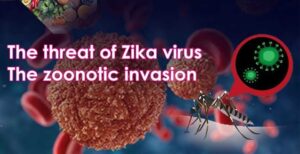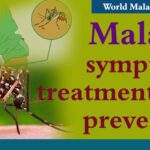The threat of Zika virus attack does not cause death and person recovers from the mild symptom. Currently there is no vaccine against Zika and thus it is better to be safe than sorry, ensure that mosquitoes do not breed in your surroundings and prevent mosquito bites through adequate safe guards.
As of July 2021, the world population is 7.90 billion. This is a very big number, and the continuously increasing human population is certainly making deeper inroads into the land that supports much of flora and fauna. This results in increased interactions between humans and animal world, which is also creating the exchange of microbial population between the two. This results in transfer of pathogenic microbes and toxins between the humans and animals. Adding to this microbial interaction is the worldwide movement of people and transportation of goods across borders. Thus, there is faster dissemination of pathogens and is causing spread of infectious disease across the globe.


Infectious diseases coming in from the animal world to humans are called VBZD: vector borne and zoonotic diseases. Some of these zoonotic diseases that originate from the animal world are carried by an intermediate vector or carrier like the mosquito to the human population. The routes by which infectious diseases from animal world infect humans are:
- Direct contact: with blood, saliva and other fluids of the animals
- Indirect contact: when the person comes in contact with infected person or thing
As defined by WHO fact sheet, zoonosis is any disease or infection that is naturally transmissible from vertebrate animals to humans. Other sources mention that zoonosis includes the transfer of infection from humans to animals too. WHO identifies over 200 known types of zoonosis. Bacteria, fungi, viruses and other parasites cause zoonosis. Zoonotic diseases include bacterial food poisoning, viral diarrhea, flu (influenza), rabies and anthrax. Zoonosis transmission occurs to humans when coming in contact with undercooked meat, vegetables, or coming in contact with animal blood, salivaand other body fluids; further, there are vector borne infections like chikungunya, malaria, and Zika. The most common vector or carrier of various zoonotic infections is the mosquito. The mosquito is a carrier of Zika, Chikungunya, dengue and West Nile viruses. Thus, there are vector borne zoonotic diseases that are seen in animal population but also carried to the human population.
Virus assault through the mosquito
In Latin and Sanskrit, virus refers to poison. In fact, the toxic effect of viruses are well known, and this despite a simple composition of the viruses. The virus is essential an outer protein-fat coat with a DNA or RNA inside as the genetic material – coding for various virus characteristics. Viruses compulsorily require the host cell to survive and replicate – their nature is to go seeking the host cell, inject the virus genetic material or fuse with the host cell membrane and replicate inside the host cell.
On entry into the host cells, the viral genes start controlling the host cell nucleus, and use the host cell structures to manufacture copies. So in a sense the virus gene is smart and can overpower the gene of host cell and control the host cellular activities. The SARS-CoV-2 RNA virus does the same; it attaches to the ACE2 receptor located on the outer cell membrane of the respiratory system cells and fuses with the host cell membrane and enters the host cell to control the nucleus and create copies of this it.
The female mosquito drinks blood of hosts, while male mosquitoes prefer plant nectar. There are three genera or main types of mosquitoes: Aedes, Culex and Anopheles. In all about 3500 species of mosquitoes are there. The transmission of Zika virus occurs through the bite of infected Aedes genus mosquitoes. Dengue and chikungunya is also spread by the Aedes mosquitoes. Zika is likely a zoonotic infection, as this virus must have originated from the animals – the first case was discovered in 1947 in Uganda; and the virus is named after Zika forest in Uganda.
The first Zika virus samples were isolated in rhesus monkeys of Zika forest, Uganda.Zika is the name of the virus and the disease, thus we say, Zika virus disease. The specialty of the Aedes mosquito is that it bites during the day, and the Zika virus is transmitted through this mosquito. Zika virus is a RNA virus, like the SARS-CoV-2 virus that causes Covid-19. But Zika virus is not a corona virus. Zika virus belongs to the genus flavivirus in which there are West Nile virus, dengue virus and encephalitis causing viruses too. These viruses are upto 65 nm in size. As these viruses are associated with arthropods like ticks and mosquitoes, they are also called arboviruses.
Zika virus infection starts manifesting signs and symptoms for 2 to 7 days from the infection stage. These symptoms are generally mild, they include: headache, fever, skin rash, malaise, muscle and joint pain, and conjunctivitis. Zika viral attack does not cause death and person recovers from the mild symptom. Zika virus remains in the blood of infected person for about a week. Currently there is no vaccine against Zika and thus it is better to avoid mosquito bites. Spread of zika virus also happens through sex and from the infected pregnant mother to the foetus. The effect on foetus is devastating. Zika virus infection during pregnancy causes infants to be born with microcephaly and other at-birth defects. Microcephaly is a congenital or at-birth defect, in which the baby’s head has a smaller size compared to normal. Microcephaly babies have a smaller underdeveloped brain. The problem of microcephaly is seen in babies born to mothers infected with Zika.
The overall birth defects due to Zika infection in a pregnant mother, is called CONGENITAL ZIKA SYNDROME. In the congenital Zika syndrome birth defects seen in such infants are severe microcephaly (with partially collapsed skull), decreased brain tissue, damage to back of eye, and restricted body movements. Several other nerve damage issues are also there.
In the Zika infected pregnant mother, chance of miscarriage and premature birth is higher. Guillain-Barré syndrome in which there is paralysis of hands and legs, with nerve damage and other diseases of the nerves can occur in Zika infected adults, children and infants.
Essentially, the Zika virus transmitted by the Aedes mosquito is toxic to the nerves in adults, children and infants (where birth defects are seen). In recent times, Zika infection has been identified in Kerala and Maharashtra – thus causing anxiety. It is better to be safe than sorry, ensure that mosquitoes do not breed in your surroundings and prevent mosquito bites through adequate safe guards.


Sunil S Chiplunkar
M Pharm (Pharmacology) MBA (Marketing) PGDHRM (PhD)
VP – Business Development, Group Pharmaceuticals, Bangalore
E mail: 1969sunilchiplunkar@gmail.com
Mob: 63645 78669











